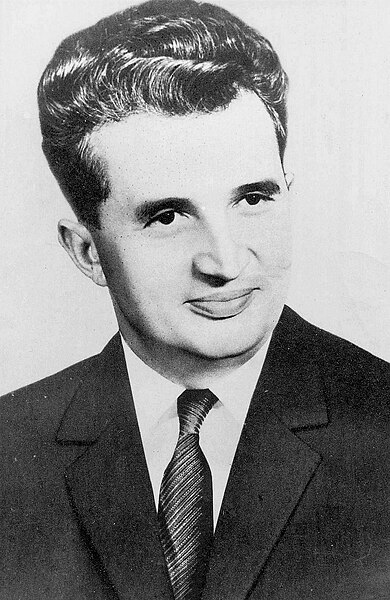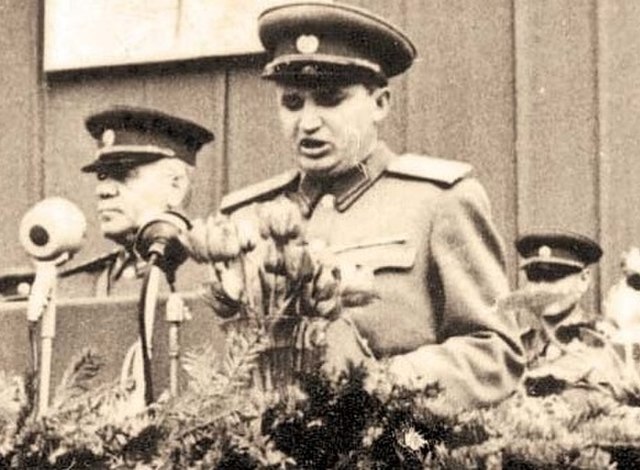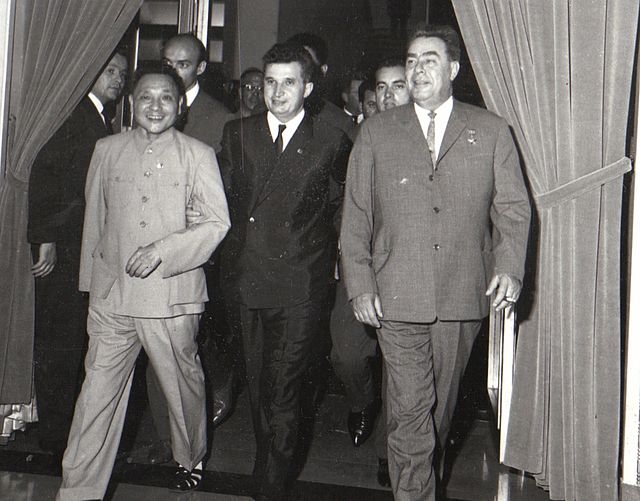Systematization (Romania)
Systematization in Romania was a program of urban planning carried out by the Romanian Communist Party under the leadership of Nicolae Ceaușescu. Ceaușescu was impressed by the ideological mobilization and mass adulation of North Korea under its Juche ideology during his East Asia visit in 1971, and issued the July Theses shortly afterwards.
Ianca (shown in a postcard) became a town in 1989, as a result of the Romanian rural systematization program. A model for a small town in geographically flat plain areas.
A typical village panel block in 1988 being built during the Romanian rural systematization program.
Nehoiu became a town in 1989, as a result of the Romanian rural systematization program. A model for a small town in geographically mountainous areas.
Militari neighborhood in Bucharest. The population of Bucharest doubled between the beginning of the communist regime and the Romanian Revolution of 1989.
Nicolae Ceaușescu was a Romanian communist politician and statesman. He was the general secretary of the Romanian Communist Party from 1965 to 1989, and the second and last communist leader of Romania. He was also the country's head of state from 1967 to 1989, and widely classified as a dictator, serving as President of the State Council and from 1974 concurrently as President of the Republic, until his overthrow and execution in the Romanian Revolution in December 1989, part of a series of anti-communist uprisings in Eastern Europe that year.
Official portrait, 1965
Arrested in 1936 when he was 18 years old, Ceaușescu was imprisoned for two years at Doftana Prison for Communist activities.
Ceaușescu giving a speech in 1954
Ceaușescu with Deng Xiaoping and Leonid Brezhnev in 1965








